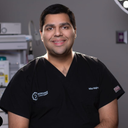I had Ulthera done approximately 11 months ago. The nurse used the deepest setting and it melted the fat in my face. I went back to my provider for filler to restore the loss volume but did not get a positive outcome. I went to another dermatologist for filler and again, it did nothing to restore enough volume to lift and smooth out the skin. My skin is like a balloon that’s been popped. All the skin has fallen and there is loose, bumpy indentations on my lower face. Do I need surgery?
Answers (12)
From board-certified doctors and trusted medical professionals

Dr. Bhupendra C.K. Patel, MD, FRCS
Oculoplastic Surgeon, Board Certified in Ophthalmology
Answer
More Ultherapy Questions
See all Ultherapy Q&AWE SEND PRETTY
EMAILS
What’s trending? Who’s turning heads? Which TikTok myths need busting? We’ve got you. No fluff, no gatekeeping—just real talk. Get our free, unfiltered newsletter.






